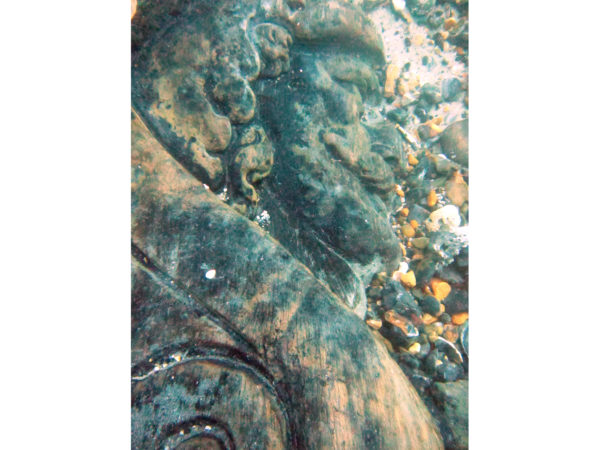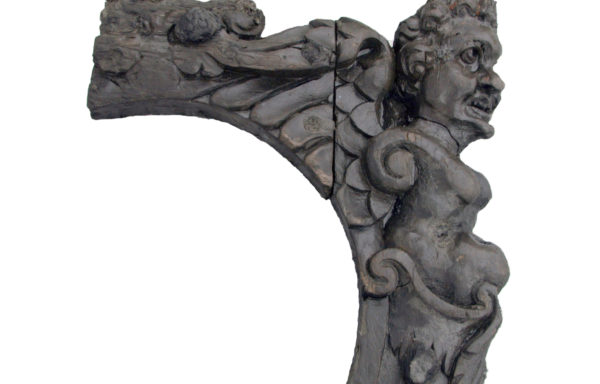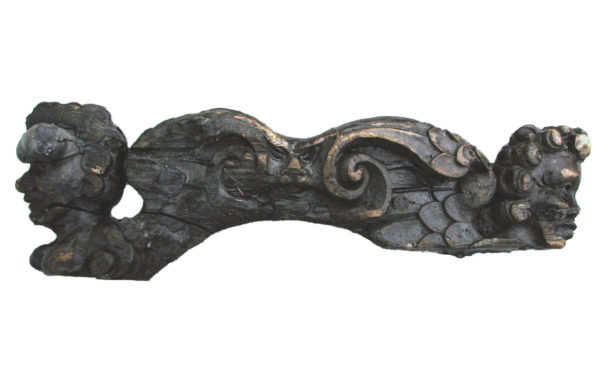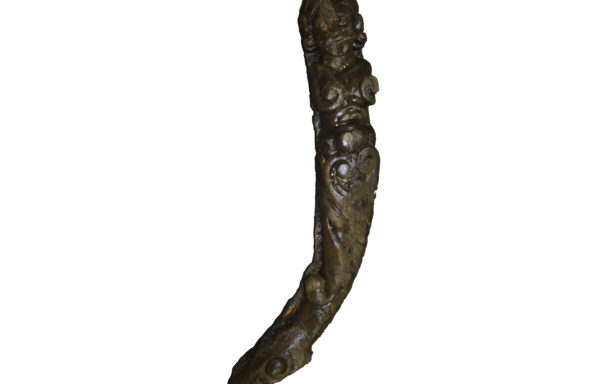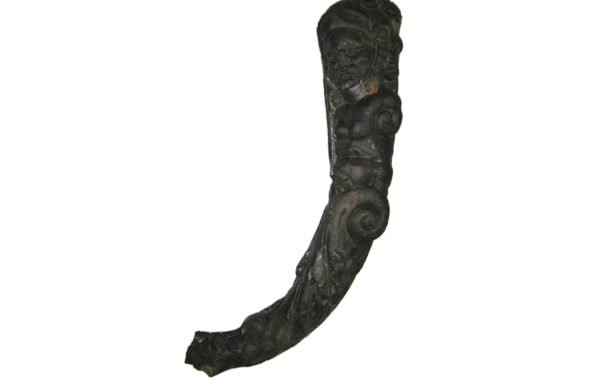Description
The rudder is made up of three main longitudinal timbers held together via through bolts in the arms of the pintles. The rudders lower extents have been sheathed with pine, tar and animal hair, this protecting cladding extends to 4.1m from the base of the rudder, most likely representing the waterline of the vessel. At the upper extents there is iron banding and a square cut hole underneath the carving with a fragment of the tiller preserved within it,and would be set up in a whipstaff arrangement.
The rudder is topped by well-defined carving with very strong features under a plumed helmet framed by curls which peek out from under the headgear and which cascade down the sides of the face. The eyes, nose, cheeks and mouth are all prominent. The eyebrows are drawn together with frown lines above the bridge of the nose in an expression of concentration. The eyes are deeply carved, slightly bulging, with heavy upper and lower lids, ‘bags under the eyes’ and deeply bored pupils, which are their most notable feature. They have features in common with three of the previous carvings. The deeply gouged pupils appear similar to those on the putti, while the ‘bags under the eyes’ are reminiscent of the first, heavy-lidded triton, and the upcast expression very similar to that on the second triton.
The rudder’s nose is abraded but is well-defined, hooked, with flared nostrils. His moustache is sufficiently luxuriant to cover his upper lip. This is probably a reflection of a contemporary fashion for facial hair, although gentlemen in Dutch portraits often had thinner moustaches, sometimes accompanied by beards (the ‘Van Dyck’ style). He appears to sport a miniature goatee, rather than the Van Dyck beard, but a dimple emphasises his otherwise exposed chin.
